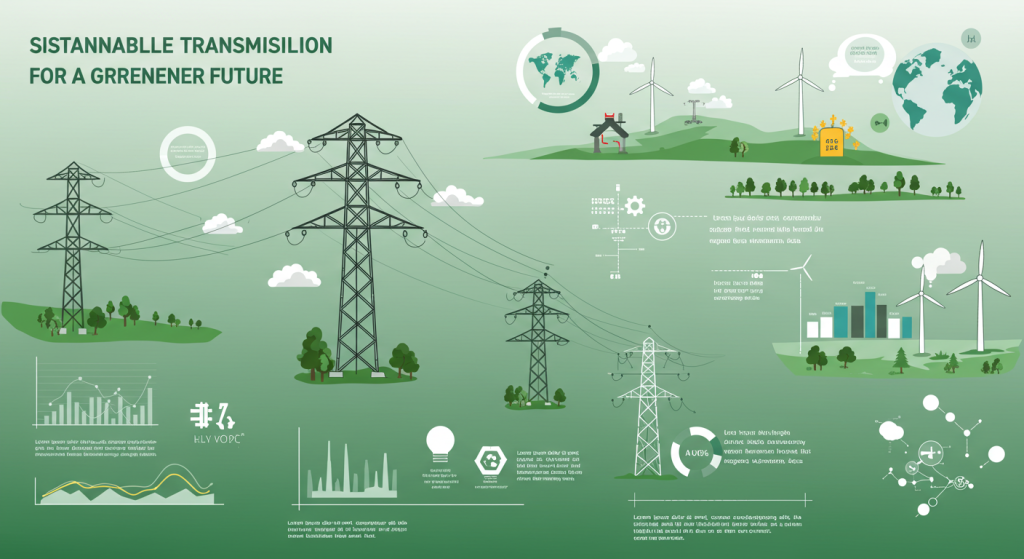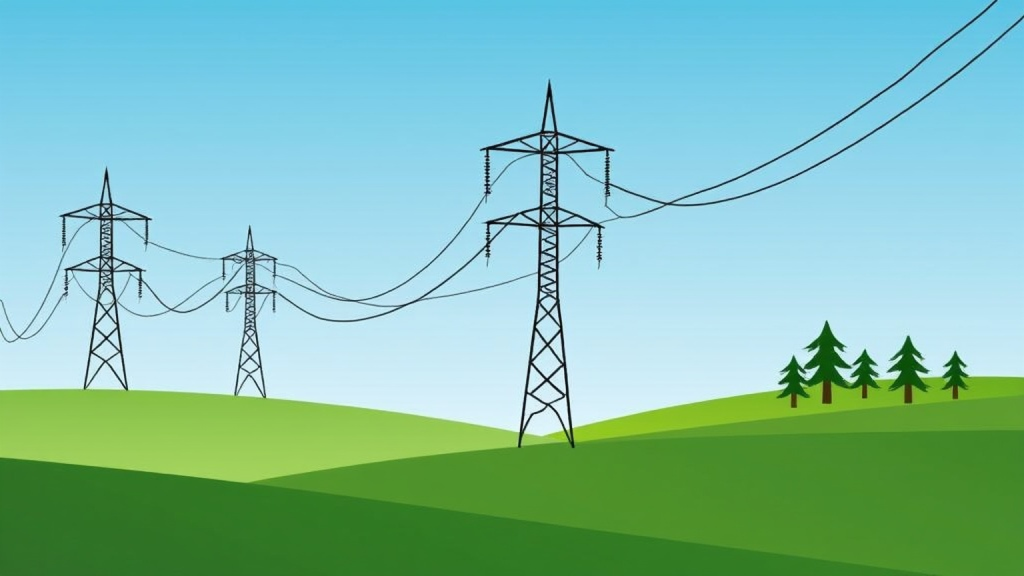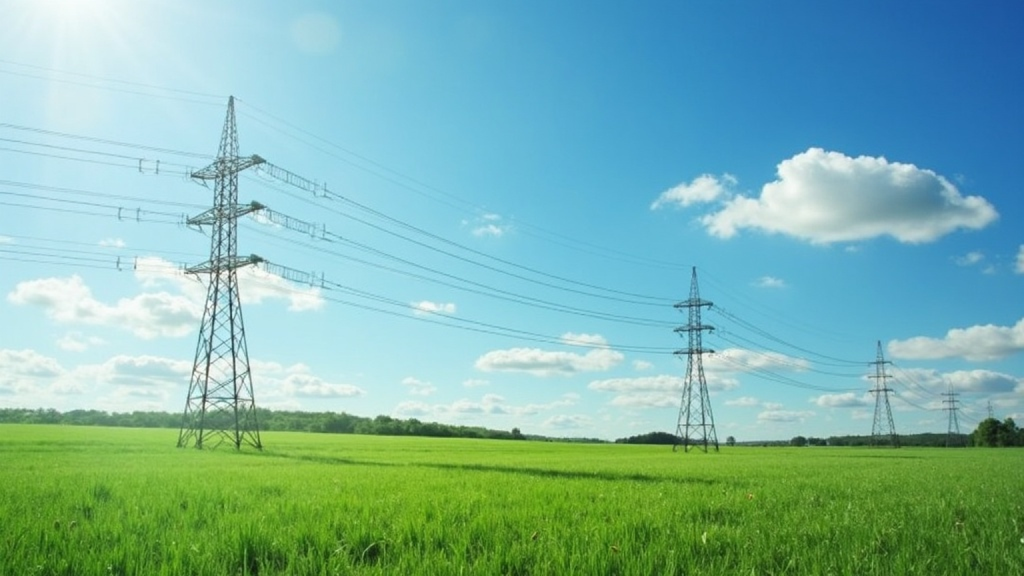Contatc
Top Sustainable Transmission Line Solutions for a Greener Future
2025-02-06

Modern society operates following basic sustainability principles that lead to building sustainable and efficient energy systems which will power the future. This article describes sustainable transmission line solutions with an examination of their underlying technologies alongside their associated advantages. These systems enable the integration of renewable power sources into power networks and simultaneously reduce environmental impacts while strengthening delivery reliability
What Are Sustainable Transmission Line Solutions?
Power transmission systems that reduce environmental impacts maintain their operational efficiency by delivering power effectively through convenient operation and economical viability. These solutions prioritize:
- Low environmental footprint through the use of eco-friendly materials and innovative construction techniques.
- Efficiency goals receive support from the combination of smart grids with contemporary energy-efficient conductors.
- Resilience to withstand climate change and extreme weather events.
- Renewable energy systems act as key infrastructure for transferring electrical power from wind energy and solar power while hydroelectricity.
The worldwide energy transformation toward sustainability requires sustainable transmission solutions since they deliver reliable power distribution networks that unite low-carbon operation with energy-efficient functions and resistance capabilities.
Key Technologies Driving Sustainable Power Transmission
To develop sustainable transmission lines solutions industry-leading materials and modern technologies must be employed. These innovative technologies have proven most impactful for the field:
Smart Grid Technologies
Monitored data through advanced control systems and automation allows smart grids to manage their distribution operations optimally. Utilities can reduce energy losses through their improved energy demand management capability using performance data obtained from these systems in real-time. The efficiency of energy transmission increases through smart grids because this practice leads to a decrease in transmission line environmental impacts.
High-Voltage Direct Current (HVDC)
The sustainable power delivery depends on advanced technology which enables the transmission of energy as high High-Voltage Direct Current (HVDC). The transmission of distance-energy at high efficiency is possible through HVDC systems which exceed standard AC transmission by minimizing power losses. HVDC systems have key technical benefits which enable the integration of renewable power resources between electrical grids including offshore wind and large solar generation platforms.
Undergrounding Transmission Lines
The installation of underground cables has emerged as a leading solution which defends ecological habitats from electrical line construction and maintains the natural appearance of landscapes. Although underground cable installation expenses exceed traditional methods the exposure to destructive storms and fires remains safeguarded. Next-generation transmission grid infrastructure receives support from power systems that provide dependable operation as well as resistance to diverse environmental conditions.
Composite Materials for Transmission Lines
Through materials science advances engineering teams developed composite structures to take over the previous steel-based uses in tower and transmission line frameworks. Transmission towers featuring composite materials have exceeded traditional steel components through improved durability and reduced weight that produces enhanced strength to build low-impact transmission lines. The requirement for lower maintenance rates on composite materials lowers the carbon emissions of transmission infrastructure.
Recycled Materials and Bio-Based Insulators
Transmission solutions that focus on sustainability construct transmission towers from recycled materials and they also employ recycled materials to create circulating conductors which supports multiple system components. Renewable resource-based insulation materials have gained popularity as an environmentally friendly solution for developing transmission systems. These components assist in reducing atmospheric carbon emissions at the same time they minimize the footprint of transmission systems throughout the entire power network.
Environmental Benefits of Sustainable Transmission Lines
Sustainable transmission line solutions prioritize implementation first since they produce substantial environmental advantages for the power industry. These technologies bring numerous environmental benefits to the future by:
Lower Carbon Footprint
Modern sustainable transmission lines provide reduced fossil fuel emissions in energy transmission through power dissipation reduction and the selection of environmentally friendly construction materials. Manufacturers use less energy making low-carbon transmission towers from composite materials compared to steel towers.
Protection of Biodiversity and Wildlife
Sustainable transmission line design requires developers to manage habitat conservation against right-of-way effects during construction planning. Humans can sustainably develop transmission by planning optimal route paths alongside ecological construction methods thus minimizing environmental and biodiversity disruptions in surrounding areas.
Reduced Visual Impact
Modern power line design methods together with underground cable installations create reduced visual effects in the transmission of power. Areas dedicated to environmental conservation and visual beauty standards should focus on sustainable transmission projects.
Renewable Energy Integration
Sustainable transmission construction enables the uninterrupted transfer of renewable energy between renewable power systems and electrical power grids. Enabled transmission systems require continuous energy transport between solar power plants and wind plants alongside hydroelectric facilities to reach the urban and suburban and rural and industrial consumer bases. The clean energy development of tomorrow requires transmission systems built for sustainability which aid power delivery and promote worldwide progress.
Economic and Social Benefits of Sustainable Transmission Solutions
The adoption of sustainable transmission solutions provides both economic benefits and social advantages besides their environmental advantages.
Cost-Effective Long-Term Operation
The up-front funding requirements for sustainable transmission lines lead to economic advantages because they reduce both maintenance expenses and improve system reliability and decrease power dissipation over their operational lifespan. Utilities obtain energy management capabilities using smart grids and HVDC systems to guide power transmission with maximum efficiency thus preventing grid outage expenses.
Improved Grid Reliability
Power grid resistance has increased through sustainable transmission solutions to prevent electricity disruptions during harsh weather or service disruptions. The application of progressive transmission technologies permits swift problem detection through real-time monitoring and underground power lines show enhanced resistance against storms.
Community Engagement
Sustainable transmission infrastructure development needs extensive community participation from start to finish of planning and construction phases. Local stakeholders who take part during planning and construction phases have chances to voice environmental and security concerns which permit appropriate responses to their concerns. Routine community-oriented engagement enables sustainable utilities to develop strong relationships with present and future customer groups.

Best Practices for Designing Sustainable Transmission Lines
Multiple key practices should guide your execution and planning of sustainable transmission line solutions.
- Environmental Impact Assessments require complete evaluation to conduct systematic assessments of transmission projects with simultaneous development of ecosystem protection mitigation strategies.
- Efficient routing systems for transmission paths need to select routes that stay away from vital environmental sites and require minimum ground disturbance.
- An early dialog between the community and project managers enables managers to solve objections ahead of time and confirm the initiative meets public expectations.
- Establishment of sustainable conductors and composite materials forms a mandatory requirement to achieve minimal Total Environmental Impact in projects.

Conclusion
The future of energy transmission is undeniably tied to sustainability. As the world embraces renewable energy sources, it’s clear that sustainable transmission solutionswill play a pivotal role in ensuring efficient, reliable, and eco-friendly electricity delivery. By adopting these cutting-edge technologies and practices, utilities can minimize environmental impacts, reduce costs, and contribute to a cleaner, greener world. For more information on sustainable transmission line solutions, visit XY Tower to explore how our innovative technologies can help shape the future of energy transmission.

Hey, I’m Chunjian Shu
"X.Y. Tower: Reliable, innovative solutions for high-quality towers and electrical equipment with professional service.
